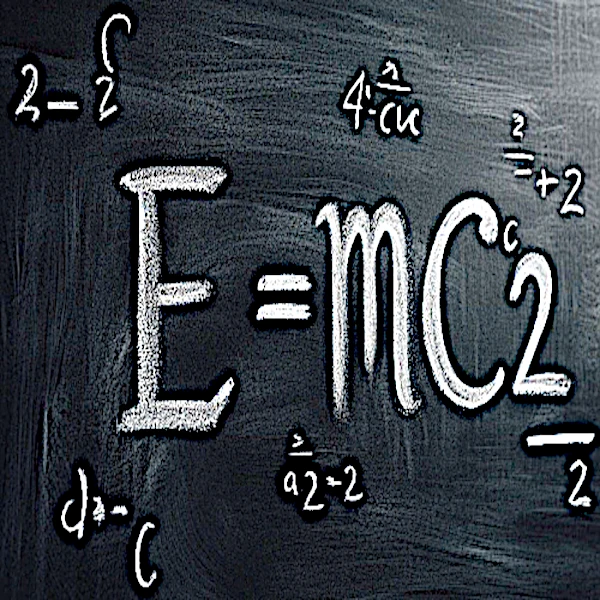
Image: credit AI.
The equation \(E = mc^2\) is not explicitly present in the article "Zur Elektrodynamik bewegter Körper" (On the electrodynamics of moving bodies). This article was submitted to the journal Annalen der Physik on June 25, 1905 and it was published on September 26, 1905.
The equation \(E = mc^2\) was introduced in more detail in another paper by Einstein, entitled "Ist die Trägheit eines Körpers von seinem Energieinhalt abhängig?" (Does the inertia of a body depend on its energy content?), also published in September 1905 in the journal Annalen der Physik.
This equation \(E = mc^2\) has revolutionized our understanding of the concepts of space, time, mass and energy.
• The equation \(E = mc^2\) shows how the energy of an object increases dramatically as its speed approaches that of light.
• The equation \(E = mc^2\) shows that the speed of 299,792,458 m/s is an upper limit on the speed of matter or energy. Nothing can move faster than the speed of light, nor even information. The speed of light is measured with great precision using lasers. This limit value is exact at 10-12 meter per second.
Objects moving at the limiting speed will also move at the limiting speed in all frames of reference, for all observers.
• The equation establishes a fundamental equivalence between mass (m) and energy (E). It suggests that mass can be converted into energy and vice versa.
Mass is converted into energy in nuclear fissions (nuclear power plants, particle accelerators) and in nuclear fusions (stars). It allows us to understand cosmic phenomena, such as supernovae, where enormous amounts of energy are released from the conversion of mass into energy.
Energy is converted into matter when it creates elementary particles in particle accelerators.
The nature of antimatter is explained by the equation \(E = mc^2\). Matter and antimatter upon meeting each other annihilate and transform 100% of their mass into pure energy.
• Time and space are no longer absolute and uniform but relative. This means that the measurement of time and space depends on the movement of the observer. Two observers moving relative to each other will measure time and space differently.
Time passes more slowly for objects that move at speeds close to light.
The lengths of objects shorten as they move at speeds close to light.
• The theory of relativity unifies space and time into a single concept called "space-time." Space and time are no longer considered independent entities, but rather interconnected. Events that occur simultaneously for one observer are not simultaneous for another observer in relative motion.
This equation profoundly changed the way physicists think about the fundamental concepts of space, time, energy and mass. \(E = mc^2\) has never been faulted. If the equation turns out to be wrong, it would mean that our understanding of matter and energy is fundamentally flawed. This would have a profound impact on our physics, because this equation is the basis of many scientific theories and applications.